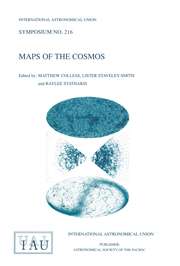No CrossRef data available.
Article contents
Star Formation Induced by Supersonic Turbulence
Published online by Cambridge University Press: 04 August 2017
Extract
Core share and HTML view are not available for this content. However, as you have access to this content, a full PDF is available via the ‘Save PDF’ action button.
Supersonic turbulent motion of gas plays a significant role in the dynamics and physics of a cosmic gas cloud. One of the most important effects of the supersonic turbulence is a strong compression of the gas by shock waves, that may trigger the gravitational instability of the shock-compressed layer leading to the formation of stars.
Information
- Type
- I. Star Forming Processes in the Solar Neighborhood
- Information
- Symposium - International Astronomical Union , Volume 115: Star Forming Regions , 1987 , pp. 444 - 445
- Copyright
- Copyright © Reidel 1987

